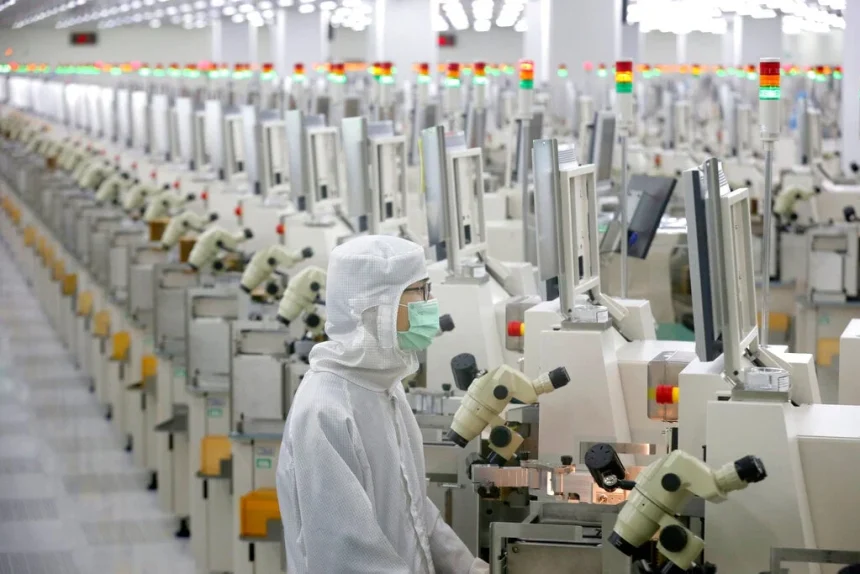China’s manufacturing sector experienced its steepest contraction in over a year in April 2025, as escalating tariffs imposed by U.S. President Donald Trump disrupted trade flows and dampened global economic confidence. The official Purchasing Managers’ Index (PMI) fell to 49.0, marking the lowest reading since December 2023 and signaling a significant decline in factory activity.
Tariffs Take a Toll
In April, the Trump administration implemented tariffs reaching up to 145% on a broad range of Chinese goods. Beijing responded with retaliatory duties of up to 125% on U.S. imports . These measures have led to a sharp decline in new export orders, which dropped to their lowest level since December 2022, reflecting the strain on China’s export-driven economy.
Economic Indicators Reflect Strain
The downturn in manufacturing has been accompanied by other concerning economic indicators. China’s non-manufacturing PMI, covering services and construction, edged down to 50.4 in April from 50.8 in March, indicating a slowdown in broader economic activity . Additionally, China’s export orders significantly declined in April following the imposition of higher U.S. tariffs, with duties reaching as high as 145%.
Global Market Repercussions
The impact of the trade tensions extends beyond China. Global financial markets have faced renewed turbulence, with investor optimism over easing trade tensions overshadowed by worsening economic data and continued fallout from U.S. tariff measures . Copper prices, often seen as a barometer for global economic health, fell sharply by 5.4% on April 30, marking a significant monthly decline of 8.4%—the steepest since June 2022.
Policy Responses and Outlook
In response to the economic slowdown, Chinese authorities are considering further stimulus measures to support the manufacturing sector and stabilize growth. Analysts have lowered their forecasts for China’s GDP growth, now predicting it will fall short of the government’s 5% target due to the trade conflict . While some U.S. and Chinese tariff exemptions have been implemented, pressure on China’s export-driven growth persists, prompting expectations of further stimulus measures.
The escalating trade war between the U.S. and China continues to pose significant risks to global economic stability. As both nations grapple with the consequences of their trade policies, the international community watches closely, hoping for a resolution that will restore confidence and growth to the global economy.










